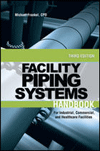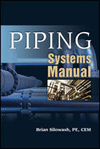Mike Miazga: Transportation affecting PHCP-PVF industry

Before I get to the meaning of the headline above, a few quick notes:
The October issue of Supply House Times is here and October means Supply House of the Year time. Congratulations to APR Supply and President and CEO Scott Weaver on this most-deserving honor. I visited company headquarters in Lebanon, Pennsylvania and was blown away by APR’s intricate business model where thoroughness and innovation in all phases comes together to form one of the best-in-class distributors we have in our industry.
I also strongly encourage you to read my story on Page 24 that chronicles the industry-changing initiative the American Supply Association and its members have put in motion related to what the distributor of 2027 will look like. Three strategic-action teams are in place to tackle three mega issues facing the industry (labor, technology and helping member distributors based on where they fall on a four-category spectrum). The end game is for these teams to present their plans of attack on each particular issue to ASA member leadership early next year. I sat in on the human capital (labor shortage) and technology kickoff meetings in Chicago last month. This is the type of forward-thinking proactivity that will set this industry up for long-term success.
Back to live programming. Who remembers the short-lived late 1970s NBC show “B.J. and the Bear?” The show starred Greg Evigan as a truck driver who traveled the country with a chimpanzee named Bear (named after legendary Alabama football coach Bear Bryant). The show did have a catchy theme song (I’m B.J. McKay and this is my best friend Bear…).
So what on earth does a sitcom with a truck driver and a monkey have to do with our industry? During the second day of HARDI’s recent Supply Chain Excellence Conference in Rosemont, Illinois, I heard two presentations on the state of the transportation industry.
And based on data and conversations about said current state, it might come to a point where Bear has to skedaddle down to the DMV and pick up his CDL license.
American Trucking Association Executive Vice President of Advocacy Bill Sullivan and Dickerson Transportation Solutions’ Corry Dickerson both gave sobering statistics on the shortage of truck drivers that ranges from the low end of around 54,000 in 2017 to somewhere in the 60,000-65,000 range current-day and, according to Dickerson, possibly heading to more than 170,000 drivers short by 2026. Dickerson told the story of one large carrier who lost 20% per truckload in 2017 because it couldn’t put drivers in the seat.
This boils down to a two-sided problem with the trucking industry in general and trucking-company customers both contributing to the malaise. “It’s a challenge for all right now,” Sullivan said.
But it’s a challenge both Sullivan and Dickerson feel can be overcome. On the workforce-development front, Sullivan noted there is movement in Washington to allow drivers as young as 18 years old to drive across state lines. Currently in 48 states, truck drivers can be as young as 18 but can’t cross state lines. A military-based pilot training program also provides hope in an industry where the average driver age is 55 right now.
Sullivan would like to see the truck-driving industry talked about more in schools. “The average age of a private truck driver at a training school is 28,” he said. “An immediate salary is $55,000 and it can get up into six figures in some cases. Right now, that average age says we can’t recruit until someone has worked for a decade in other careers. Our biggest hope is we catch young men and women at the beginning of their work life and show them this is a profession.”
But Sullivan and Dickerson agree equally important help in solving this crisis needs to come from the customer end. “One driver was sitting 2-3 hours waiting for a load and needed to use the restroom and the customer wouldn’t let him,” Sullivan said.
Dickerson said something as simple as cooking hot dogs for your internal and/or external drivers can go a long way. “A driver’s time is gold,” he said. “Anything you can do to help reduce the time they are at your place and create comforts will help you.”
And this from Sullivan to wrap things up: “Keeping drivers is one of the biggest competitive advantages a company has. Be a better partner.”
These are common-sense solutions that hopefully will put a dent in a crisis hampering one of the most important parts of our industry.
Looking for a reprint of this article?
From high-res PDFs to custom plaques, order your copy today!










